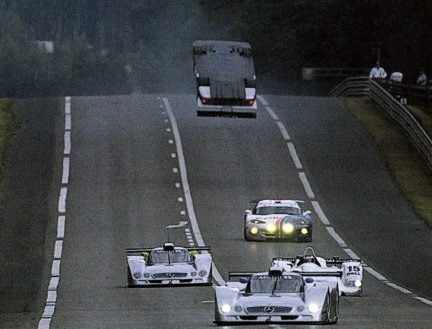Gr. 1 cars tends to have better top speeds if you adjust their suspension with some non sensetical setup. Maximize their front hight and frequency, minimize their back hight and frenquency. With some proper tuning they nearly gain 40 kmh more top speed.
I dont know if anyone witness this but i dont think any suspension setting should increase the top speed of a car that much.
I dont know if anyone witness this but i dont think any suspension setting should increase the top speed of a car that much.





 ).
). 
 . 40km/h isn't really all that much if you're already going 320km/h and over, especially in a high downforce racecar. if the car only weighs 800kg and produces 1600kg of downforce, you car is doing that speed and weighing 2400kgs. If you can use rake to drop the effects of the aero part it has the same effect as lightening the car. And a lighter car will go faster, the engine has less work to do. If the gearing allows it of course.
. 40km/h isn't really all that much if you're already going 320km/h and over, especially in a high downforce racecar. if the car only weighs 800kg and produces 1600kg of downforce, you car is doing that speed and weighing 2400kgs. If you can use rake to drop the effects of the aero part it has the same effect as lightening the car. And a lighter car will go faster, the engine has less work to do. If the gearing allows it of course. .
.